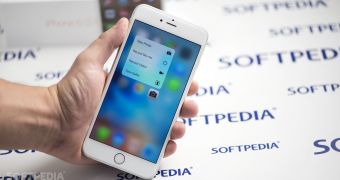Microsoft has recently patented a new technology called “Multiple stage shy user interface,” which seems to be a feature similar to Apple’s own 3D Touch that debuted on the iPhone 6s and 6s Plus last year.
While at the moment there’s still no evidence that this new tech could ever make it to production, it appears that Microsoft’s looking at the discontinued Nokia McLaren to create something that would make its devices more advanced in terms of user interaction.
According to patent information provided by PocketNow, the shy user interface makes it possible to control certain features without necessarily touching the screen, but getting additional functionality when hovering specific controls.
For example, when watching a movie, you can simply put your finger close to the screen, and without touching it, reveal more options such as media controls. Hovering the forward button, for instance, lets you access different speeds for fast forward, the patent explains.
Possible thanks to 3D proximity sensors
Microsoft, however, is aiming for more advanced functionality for this new technology that could be based on the position of the finger and other gestures.
“Hover sensitive interfaces may detect not just the presence of a user’s finger, but also the angle at which the finger is pointing, the rate at which the finger is moving, the direction in which the finger is moving, or other attributes of the finger,” Microsoft adds.
“Thus, rather than a binary {touch: yes/no} state detection, a higher order input space may be analyzed to determine a user’s intent with respect to a user interface element. 3D proximity detectors may determine which object or screen location the user intends to interact with and may then detect and characterize multiple attributes of the interaction.”
Certainly, such a feature would significantly improve Microsoft’s mobile devices, and with the Surface Phone becoming a more important product for the company, there is hope that this new user interaction system will make it to production when this device hits the market.

 14 DAY TRIAL //
14 DAY TRIAL //